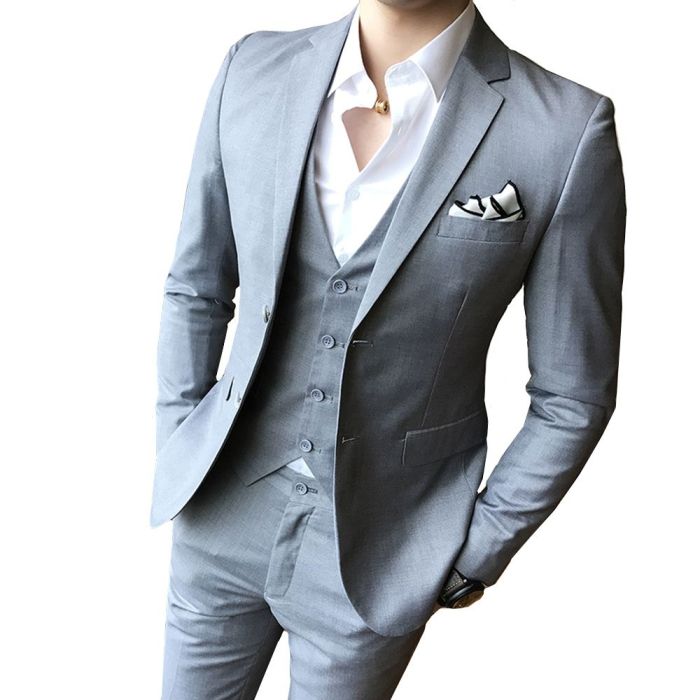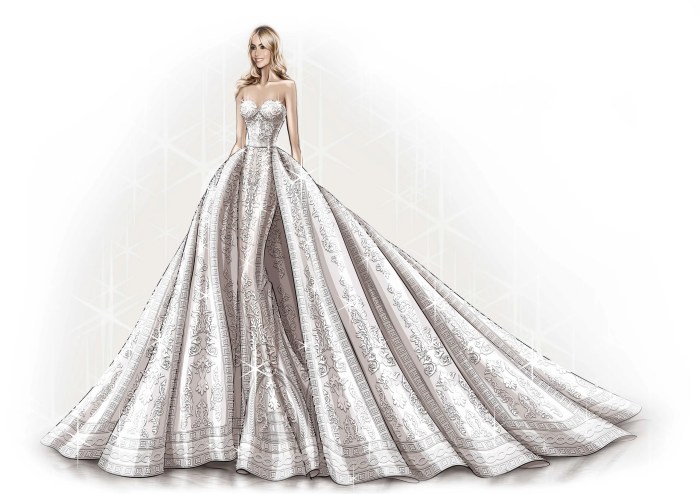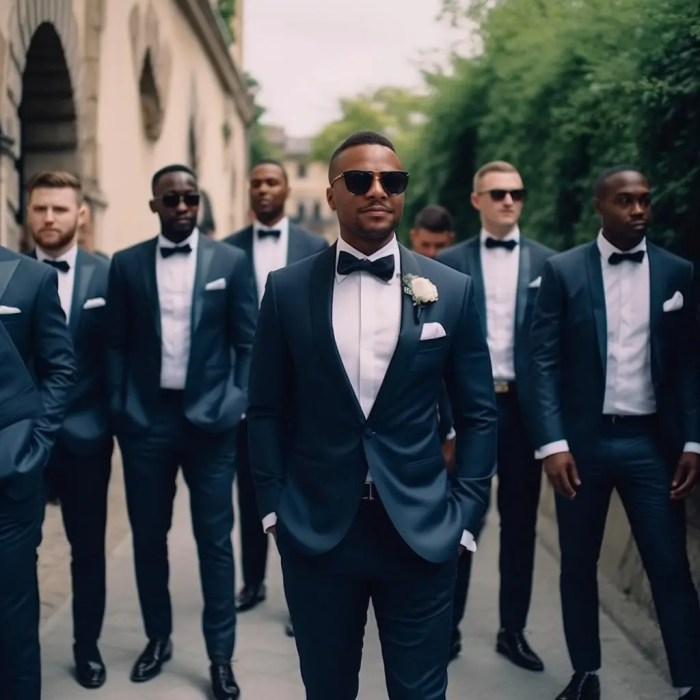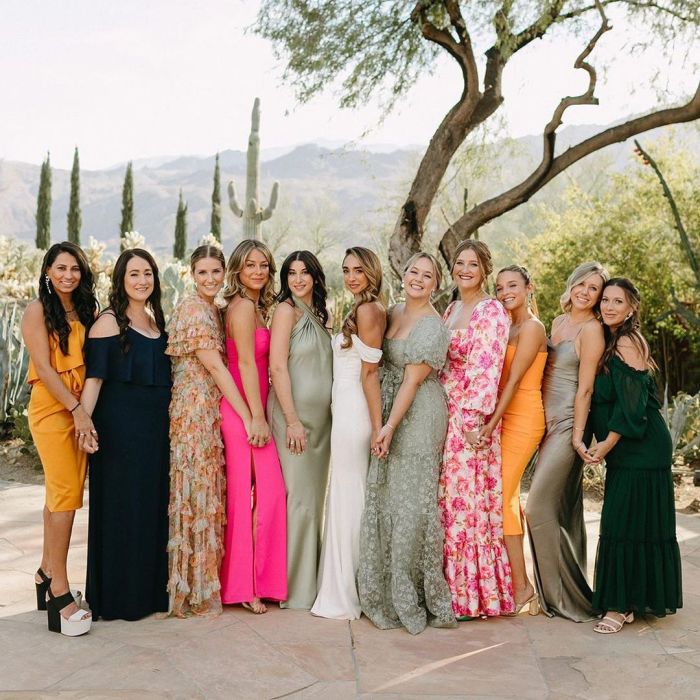Wedding Attire: A Comprehensive Guide
Dresses and suits for weddings – Choosing the perfect attire for a wedding is a crucial step in planning this special occasion. This guide explores the diverse world of wedding dresses and suits, offering insights into styles, trends, and budget considerations to help you make informed decisions.
Wedding Dress Styles: A Century of Evolution
Wedding dress styles have undergone a significant transformation over the past century. Early 20th-century gowns often featured long sleeves, high necklines, and a more modest silhouette, reflecting the societal norms of the time. The 1920s brought the flapper era, with shorter, looser dresses. The 1950s saw a resurgence of full skirts and cinched waists, while the 1960s embraced simpler, A-line silhouettes.
Modern interpretations often blend elements from various eras, creating unique and stylish designs.
Classic Wedding Dress Silhouettes and Their Modern Interpretations
Several classic silhouettes remain popular, each offering unique advantages. Below is a table detailing these styles:
| Style | Description | Suitable Body Type | Popular Fabric |
|---|---|---|---|
| A-Line | Fitted at the shoulders, gradually widening to the hem. | Most body types | Lace, satin, chiffon |
| Ballgown | Fitted bodice with a full, voluminous skirt. | Hourglass, pear, and apple shapes | Tulle, organza, silk |
| Mermaid | Fitted from the shoulders to the knees, then flaring out dramatically. | Hourglass and athletic builds | Lace, satin, crepe |
| Sheath | Straight, form-fitting silhouette. | Slender builds | Silk, crepe, satin |
Comparing A-Line, Ballgown, Mermaid, and Sheath Wedding Dresses
The A-line dress is versatile and flattering on most body types, offering a balance of elegance and comfort. The ballgown, with its dramatic skirt, is ideal for creating a fairytale look. The mermaid silhouette accentuates curves, while the sheath dress offers a sleek, modern aesthetic. The choice depends on personal preference and body type.
Three Unique Wedding Dress Designs
- A modern take on the classic A-line, featuring delicate lace appliqués on a silk crepe base, paired with a flowing chiffon train.
- A vintage-inspired ballgown with a fitted bodice adorned with pearl embellishments and a full tulle skirt, incorporating a modern asymmetrical neckline.
- A contemporary mermaid gown in a bold color like emerald green or navy blue, accented with intricate beading and a subtle train.
Wedding Suit Styles for the Groom: A Timeless Tradition
Men’s wedding attire has evolved alongside societal trends, reflecting changing fashion sensibilities. From the formal morning suits of the Victorian era to the modern slim-fit suits, the groom’s attire plays a vital role in setting the wedding’s tone.
Classic Wedding Suit Styles: Tuxedos, Suits, and Morning Suits
Tuxedo
Typically black or midnight blue, featuring satin lapels and often accompanied by a bow tie. Very formal.
Suit
Choosing the right attire for a wedding can be a delightful yet challenging task, encompassing a wide range of options from elegant dresses to sophisticated suits. For women attending as guests, finding the perfect outfit is key, and a great starting point is browsing selections like those found at women’s formal wedding guest dresses. Ultimately, the ideal choice depends on the wedding’s formality and your personal style, whether it’s a flowing gown or a sharp pantsuit.
More versatile than a tuxedo, suits can be in various colors and fabrics, and can be paired with a tie or bow tie.
Morning Suit
A highly formal choice, usually consisting of a tailcoat, striped trousers, and waistcoat. Typically worn for daytime weddings.
The Impact of Fabric Choice on Wedding Suits
The fabric significantly impacts the suit’s appearance and comfort. Wool offers warmth and structure, linen provides breathability for warmer weather, and silk lends a luxurious sheen. The choice should align with the wedding’s formality and season.
Wedding Suit Style Guide Based on Formality and Season, Dresses and suits for weddings
A formal winter wedding might call for a dark-colored wool tuxedo, while a summer beach wedding might suit a lighter-colored linen suit. A semi-formal autumn wedding could feature a navy blue wool suit. Consider the venue and overall aesthetic when selecting the fabric and style.
Matching Bridal Party Attire: Harmonious Coordination
Coordinating the attire of the bridal party ensures visual harmony and enhances the overall aesthetic of the wedding. Careful consideration of color palettes, fabrics, and styles is crucial.
Color Palettes and Fabric Choices for Different Wedding Themes
A rustic wedding might feature earthy tones and natural fabrics like linen or cotton, while a beach wedding could use pastel shades and flowing fabrics like chiffon or silk. A formal ballroom wedding might call for rich jewel tones and luxurious fabrics like velvet or satin.
Bridal Party Attire for Various Wedding Themes

Source: dhresource.com
| Wedding Theme | Bridesmaids’ Dresses | Groomsmen’s Suits | Color Palette |
|---|---|---|---|
| Beach Wedding | Flowing maxi dresses | Linen suits | Pastel blues, corals, and whites |
| Rustic Wedding | Midi dresses in floral prints | Navy or brown suits | Burgundy, blush, and olive green |
| Formal Ballroom Wedding | Long gowns in rich colors | Black tuxedos | Emerald green, sapphire blue, or burgundy |
Three Bridal Party Attire Combinations
1. Beach Wedding
Flowing chiffon maxi dresses in shades of blush pink and lavender for bridesmaids; light beige linen suits for groomsmen.
2. Rustic Wedding
Midi dresses with floral prints in shades of burgundy and blush for bridesmaids; navy blue suits with brown leather shoes for groomsmen.
3. Formal Ballroom Wedding
Long, elegant gowns in emerald green for bridesmaids; classic black tuxedos with bow ties for groomsmen.
Accessories and Details: Elevating the Look: Dresses And Suits For Weddings
Accessories play a vital role in completing the wedding attire, adding personality and enhancing the overall aesthetic. Careful selection can create a cohesive and stylish look.
Key Accessories for Wedding Dresses and Suits
Key accessories for wedding dresses include veils, jewelry, and shoes. For suits, ties, boutonnieres, and cufflinks are essential.
How Accessories Complement or Contrast Wedding Attire

Source: vogue.com
Accessories can either complement the overall style, using similar colors and textures, or create a stylish contrast, introducing a pop of color or a different texture.
A Bride’s Wedding Day Look: A Visual Description
The bride wore a stunning A-line gown in ivory silk crepe, adorned with delicate lace appliqués.
Her shoes were elegant ivory satin pumps with a delicate ankle strap.
She accessorized with a delicate pearl necklace and earrings, and a cathedral-length veil.
A simple yet elegant diamond bracelet completed her look.
Choosing Accessories that Match the Wedding Theme and Personal Style
Accessories should reflect the wedding’s theme and the couple’s personal style, creating a cohesive and memorable look.
Budget Considerations: Managing Wedding Attire Expenses
Wedding attire can be a significant expense. Careful planning and strategic choices can help manage the budget without compromising style or quality.
Factors Influencing the Cost of Wedding Dresses and Suits
The cost is influenced by designer labels, fabric quality, embellishments, and alterations.
Tips for Finding Affordable Yet Stylish Wedding Attire

Source: cloudfront.net
Consider renting a dress or suit, shopping at sample sales, or opting for less expensive fabrics.
Budget-Friendly Options for Wedding Attire
Many retailers offer stylish and affordable options without sacrificing quality. Consider browsing online retailers or visiting local boutiques.
Strategies for Managing the Budget Allocated to Wedding Attire
Set a realistic budget early on, shop around for the best deals, and prioritize spending on the most important aspects.
General Inquiries
What are some eco-friendly options for wedding attire?
Consider renting your dress or suit, opting for sustainable fabrics like organic cotton or recycled materials, or purchasing pre-owned attire.
How far in advance should I start shopping for my wedding attire?
Ideally, begin shopping 9-12 months prior to your wedding to allow ample time for alterations and potential delays.
What if my wedding attire doesn’t fit perfectly after alterations?
Have a seamstress on standby for minor adjustments closer to the wedding date. Consider bringing comfortable undergarments and shoes to your fittings.
How do I handle unexpected damage to my wedding attire?
Wedding insurance can cover unforeseen damages or loss. Carefully pack and transport your attire to minimize risk.

